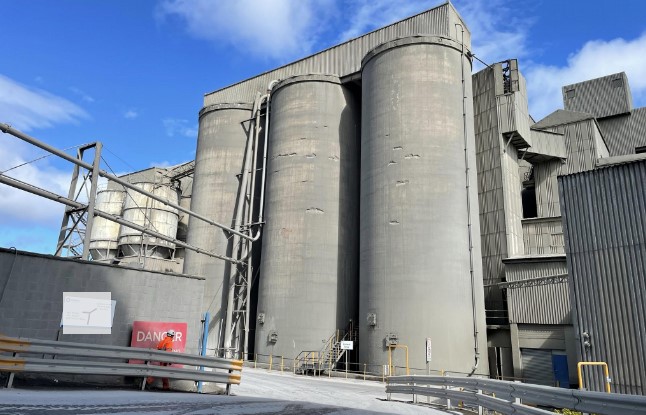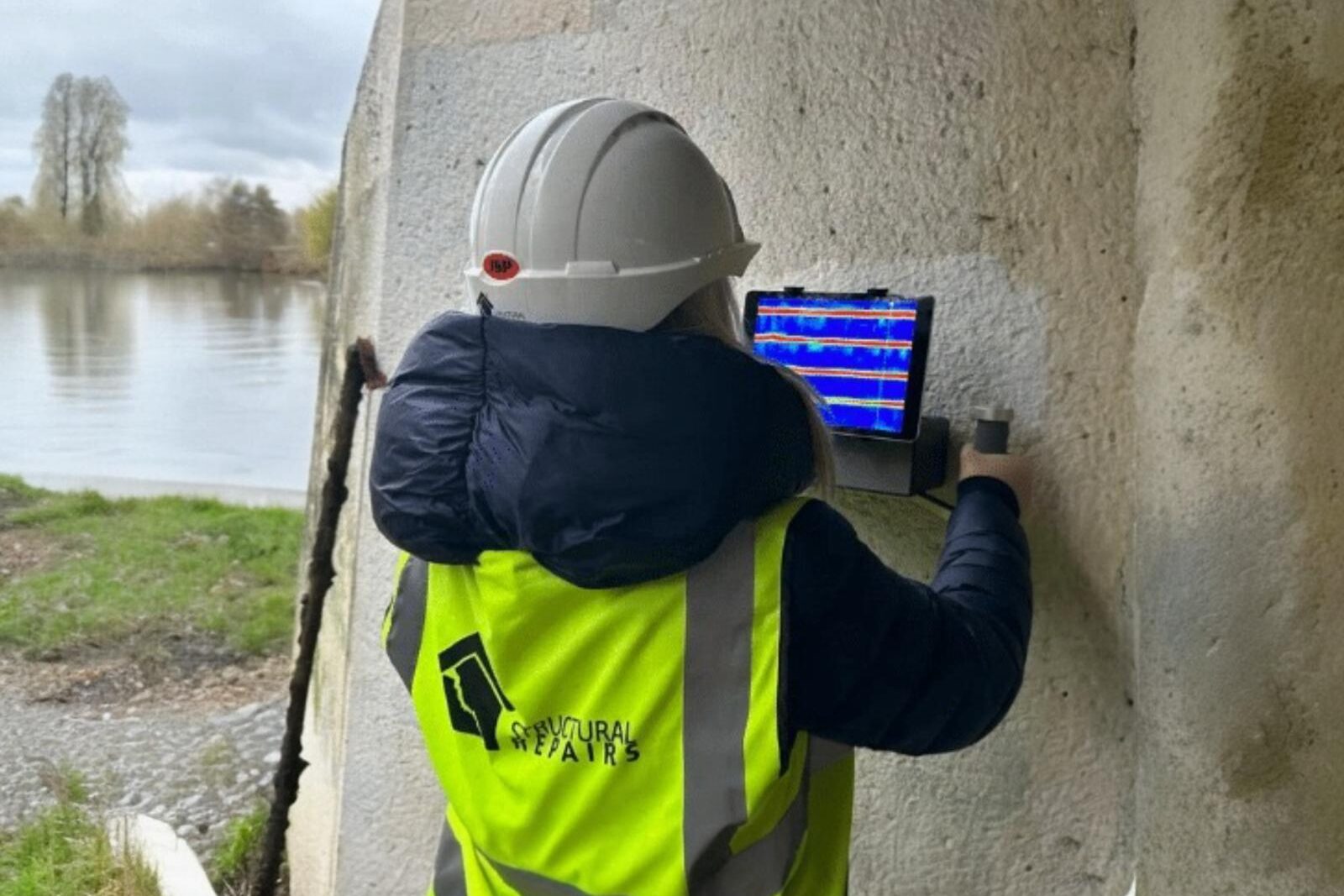Erkennung von Betonabplatzungen: Moderne Methoden zur Erkennung von abblätterndem Konstruktionsbeton
Jedes Gebäude erzählt eine Geschichte – durch das Geflüster von Abplatzungen, Haarrissen und subtilen Flecken, die nur Experten wirklich lesen können. Der abgeplatzte Beton an Ihrer Wand? Er könnte Bände über den Zustand Ihres Gebäudes sprechen. Wenn es um die strukturelle Integrität geht, können Abplatzungen und Delaminationen von Beton ernsthafte Risiken darstellen, die über bloße Oberflächenschäden hinausgehen.

Abplatzungen verstehen: Was bedeutet das Abplatzen von Beton?
Abplatzungen (auch bekannt als Betonabplatzungen) sind eine schwerwiegende Form des Verfalls, bei der die Oberflächenschicht des Betons abbricht und oft beschädigtes Material darunter zum Vorschein kommt. Dieser Abplatzungsprozess kann verschiedene Strukturen betreffen, von Abplatzungen an Ziegeln bis hin zu Zementoberflächen. Professionelle Bauingenieure wissen, dass sich hinter scheinbar unbedeutenden Abplatzungen oft größere Probleme verbergen, die sofortige Aufmerksamkeit erfordern.
Der Prozess der Betonzerstörung und Abplatzungen
Oberflächenverschlechterung und Abplatzungen wirken wie heimliche Widersacher, die zunächst unauffällig beginnen und dann allmählich die strukturelle Integrität eines Gebäudes gefährden. Die Bedeutung von Abplatzungen wird klar, wenn Sie verstehen, wie sie entstehen: Ähnlich wie die Kontrollleuchte eines Fahrzeugs erfordern diese frühen Warnzeichen – von abgeplatzten Oberflächen bis hin zu Rostflecken – eine sofortige professionelle Beurteilung. Ohne angemessenes Eingreifen können sich Abplatzungen zu größeren strukturellen Problemen auswachsen, die die Sicherheit des gesamten Gebäudes gefährden könnten.
Der stille Zerstörer: Die Interaktion von Wasser und Stahl in abgeplatztem Beton
Im Zentrum des Abplatzungsprozesses steht die Anfälligkeit von Bewehrungsstäben (Rebar). Diese wichtigen strukturellen Komponenten, die in den Beton eingebettet sind, sind einem erheblichen Risiko ausgesetzt, wenn sie Feuchtigkeit ausgesetzt sind. Die daraus resultierende chemische Reaktion löst Rost aus, wodurch sich der Stahl ausdehnt. Diese Ausdehnung erzeugt zusätzlichen Druck innerhalb des Betons, was zu Abplatzungen führt und den Verfallsprozess beschleunigt. Um zu verstehen, was abblätternder Beton ist, muss man diese grundlegenden Wechselwirkungen erkennen.
Die chemische Bedrohung: Karbonatisierung und Betonabplatzungen
Die vielleicht heimtückischste Bedrohung geht von der Karbonatisierung aus, einem chemischen Prozess, der Betonkonstruktionen auf der ganzen Welt betrifft und häufig zu Abplatzungen führt. Wenn atmosphärisches Kohlendioxid mit dem Kalziumhydroxid des Betons reagiert, senkt es allmählich den pH-Wert des Materials. Diese chemische Umwandlung beeinträchtigt den natürlichen Schutz, den Beton für seine Stahlbewehrung bietet. Das Ergebnis ist eine beschleunigte Rostbildung, eine Verschlechterung der Oberfläche und schließlich die Notwendigkeit umfangreicher struktureller Reparaturen.
Evolution der Detektionsmethoden: Vom einfachen Anzapfen zum fortschrittlichen Spalltest
In früheren Jahrzehnten stützte sich die Strukturbewertung auf einfache, aber praktische Methoden. Die primäre Methode, der Klopftest, bestand darin, auf Betonoberflächen zu klopfen, um mögliche Abplatzungen zu erkennen, indem man auf hohle Geräusche hörte, die auf strukturelle Probleme hinweisen könnten. Zwar konnten erfahrene Fachleute bei der Erkennung früher Anzeichen von Abplatzungen vernünftige Ergebnisse erzielen, doch fehlte es dieser Methode an Präzision und Zuverlässigkeit. Kernproben boten detailliertere Einblicke in den Verfall, erforderten aber Bohrungen in die Strukturen – ein effektiver, aber zerstörerischer Prozess, der die strukturelle Integrität gefährden konnte.
Moderne Lösungen: Die Revolution in der Technologie zur Bewertung der Oberflächenverschlechterung
Die heutige Beurteilung von Bauwerken hat sich zu einer ausgeklügelten Mischung fortschrittlicher Technologien entwickelt, die eine dramatische Veränderung gegenüber den traditionellen Methoden darstellt. Moderne Scanverfahren zur Erkennung von Delaminationen und Abplatzungen in Beton stellen einen Quantensprung dar – vergleichbar mit der Entwicklung vom einfachen Stethoskop zum MRT-Gerät in der medizinischen Diagnostik. Bodendurchdringendes Radar (GPR), Ultraschalltechnologie und umfassende 3D-Kartierungsfähigkeiten bieten jetzt noch nie dagewesene Einblicke in abgeplatzte Betonstrukturen. Diese nicht-invasiven Methoden ermöglichen eine präzise Erkennung von Schäden, Hohlräumen, Korrosion von Bewehrungsstäben und Wassereinbrüchen und machen zerstörende Tests überflüssig.

Experteneinblick: Der Wert einer frühzeitigen Erkennung von Abplatzungen
Laut Roger Line, CEO von Structural Repairs und Autor von “Extending the Life of Buildings and Structures”, sind die Parallelen zwischen der strukturellen Gesundheit und der Prävention von Abplatzungen frappierend. “Bedenken Sie diese Perspektive: Sie würden nicht warten, bis ein Zahn ausfällt, bevor Sie einen Zahnarzt aufsuchen. Das gleiche Prinzip gilt für die Vermeidung von Oberflächenverfall und die Erhaltung der Integrität von Gebäuden”, erklärt Line.
Durch fortschrittliche Erkennungsmethoden können Abplatzungen erkannt und behoben werden, bevor sie zu kostspieligen Problemen eskalieren.
Dieser proaktive Ansatz zur Instandhaltung anstelle von reaktiven Reparaturen hat sich in der Praxis als revolutionär erwiesen. Wenn potenzielle Abplatzungen frühzeitig erkannt werden, spart dies nicht nur erhebliche Kosten, sondern verlängert auch die Lebensdauer von Gebäuden um Jahrzehnte. Die Integration moderner Technologie mit ingenieurtechnischem Fachwissen bietet jetzt eine unvergleichliche Genauigkeit bei der Bewertung der Bausubstanz und der Erkennung von Schäden. Jedes Gebäude wird bis ins kleinste Detail untersucht, um seine Langlebigkeit und Sicherheit für die nächsten Jahre zu gewährleisten. Dies ist mehr als nur ein technologischer Fortschritt – es ist ein grundlegender Wandel in der Art und Weise, wie wir den Erhalt von Gebäuden und die strukturelle Integrität für zukünftige Generationen angehen.
Suchen Sie nach professionellen Dienstleistungen zur Bewertung von Beton? Kontaktieren Sie unser Team von Strukturexperten für eine umfassende Bewertung Ihres Gebäudes.